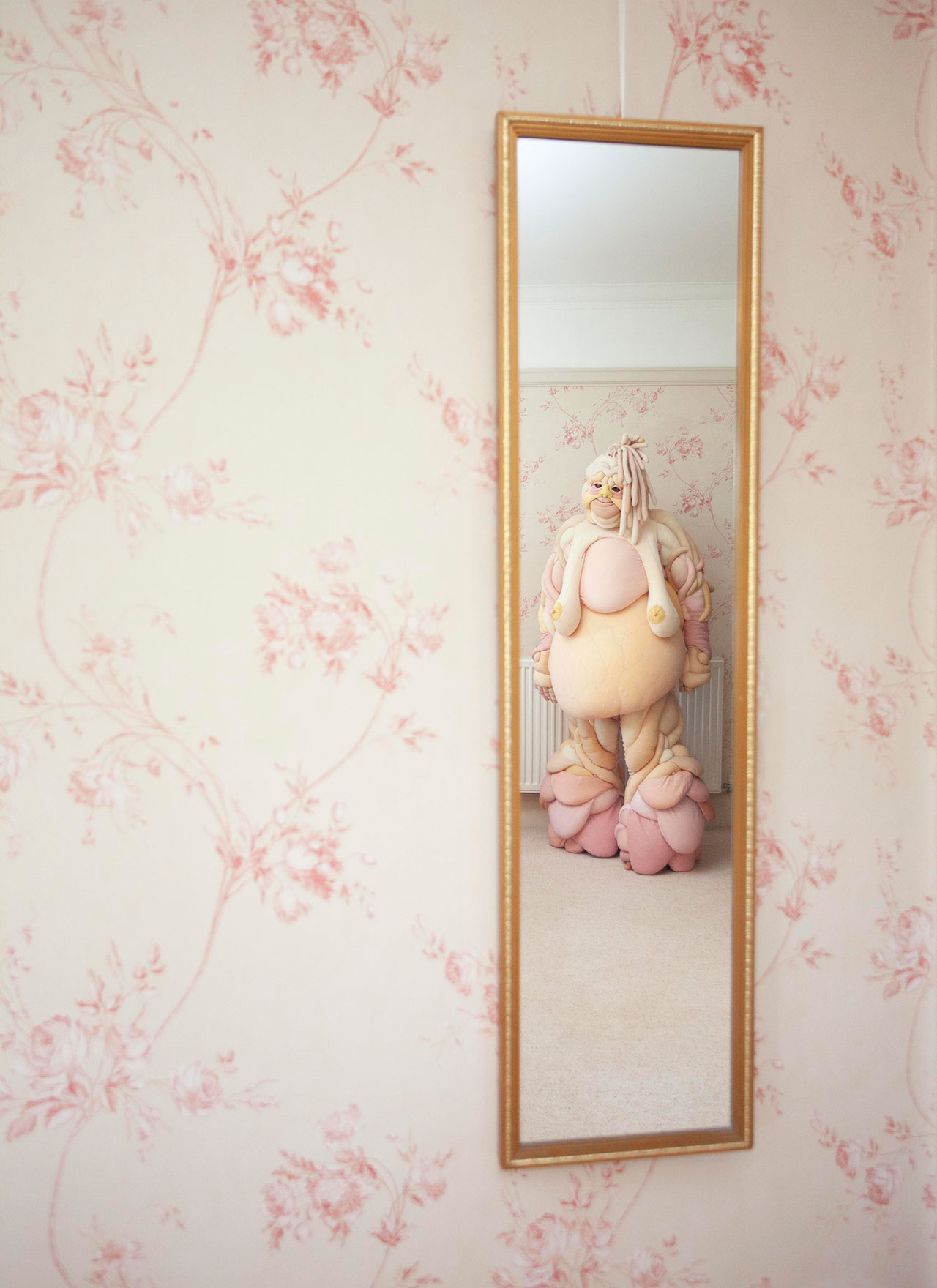
Daisy Collingridge, Suzan (selfie), 2021. Photo by Daisy Collingridge.
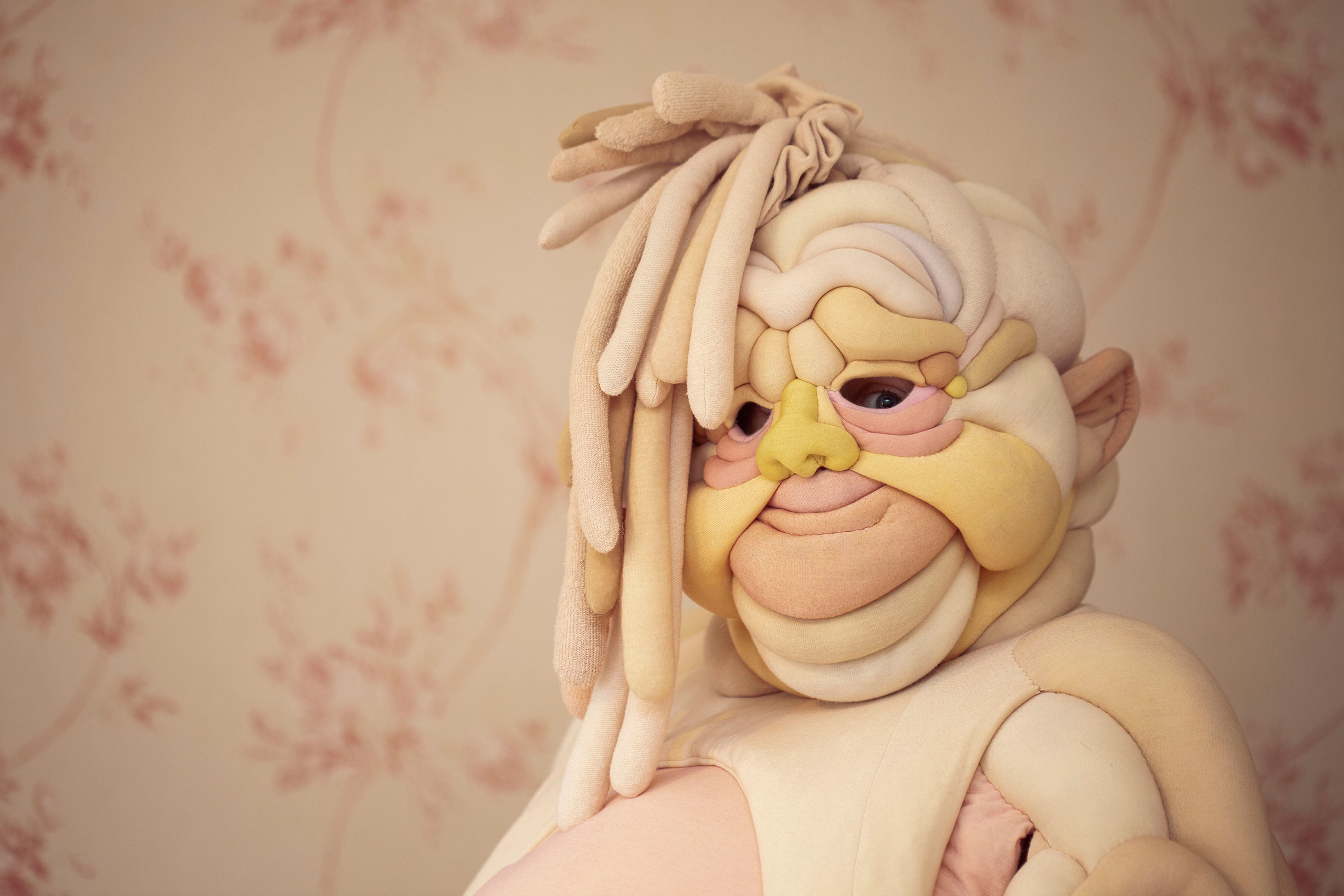
Daisy Collingridge, Suzan (portrait), 2021. Photo by Daisy Collingridge.
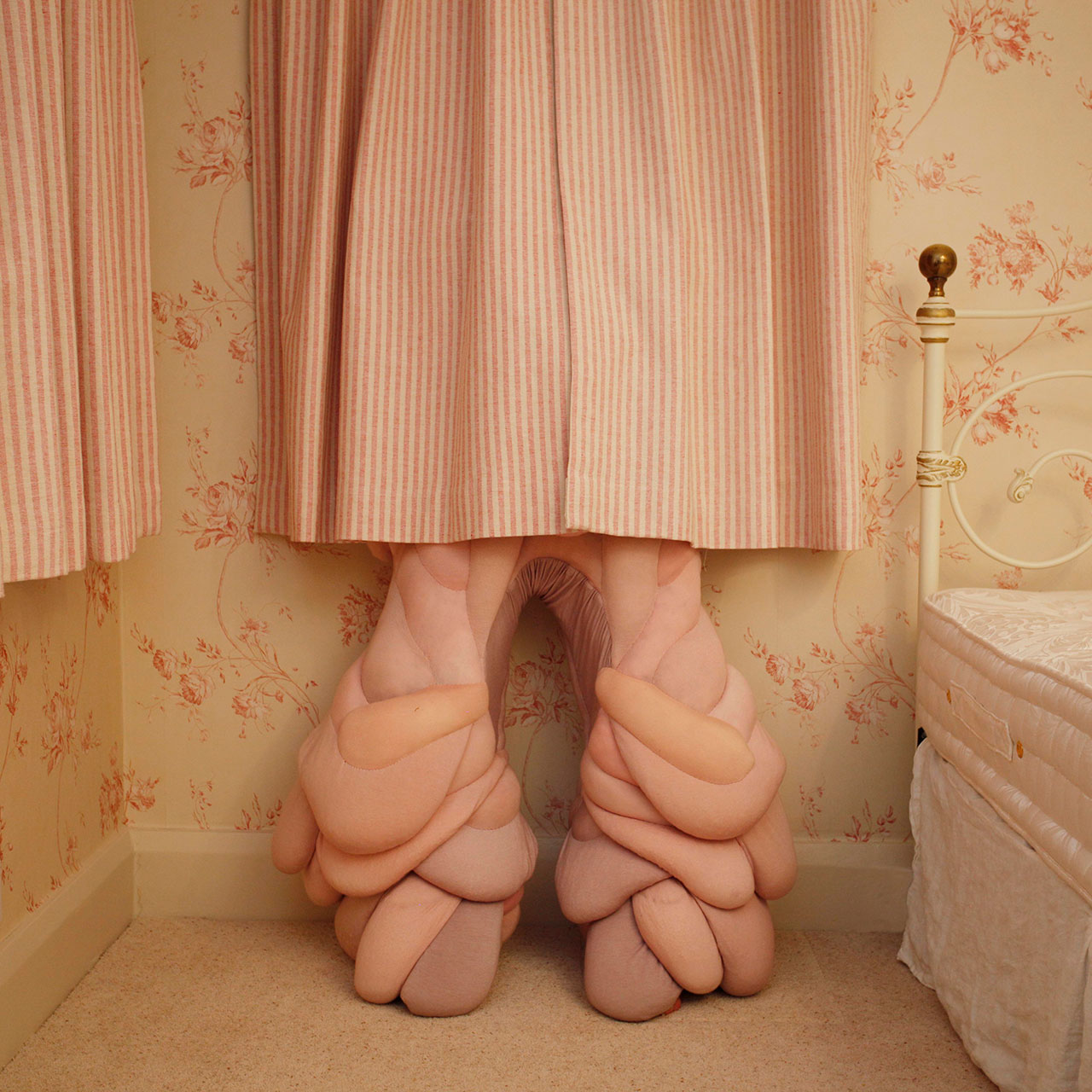
Daisy Collingridge, Behind the curtains, 2021. Photo by Daisy Collingridge.
What inspired you to create your series of fleshy bodysuits? What is the message you want to convey?
I see my work as a mix of an extreme form of quilting and a study of anatomy. The initial idea came from pushing the technique of quilting to create sculptural forms. The layered and shaped sections of fabric and wadding simultaneously mimic the relief pattern in a quilt and the muscular structure of the body. Cloth is an appropriate and sympathetic medium to sculpt skin and flesh as it is soft, warm, stretchy and dynamic. For me, the work is a meticulous study of the human body and a celebration of the complex machine in which we all exist in for a time.
Your work fuses sculpture and performance – the bodysuits you create need someone to bring them to life. What drew you to this multidisciplinary approach?
It can be an awkward space; straddling different disciplines. It wasn’t a conscious decision. I love the act of animation; of breathing life into a thing. Arguably the work still has a certain life to them without placing body inside but there is a joyous shift when they come to life. My practise enables me to bring dynamism and movement to a sculpture. Performance enables me to construct worlds around these sculptures. My multi-disciplinary approach allows me to engage on different levels.
Despite the bulkiness of the bodysuits, when the figures come alive, they are full of energy, playfulness and mischief. How central is this juxtaposition to your work?
The juxtaposition serves to captivate and question. My motivation is to create work that is playful and joyful but I acknowledge there can be a complex interplay of opposing sensations. Some viewers can be simultaneously repelled and mesmerised. To me they are beautiful; a representation of flesh in cloth. The energy emulating throughout the work empowers the viewer to question the potential of the human body.

Daisy Collingridge, Lean on me (Burt and Hillary), 2021. Photo by Daisy Collingridge.
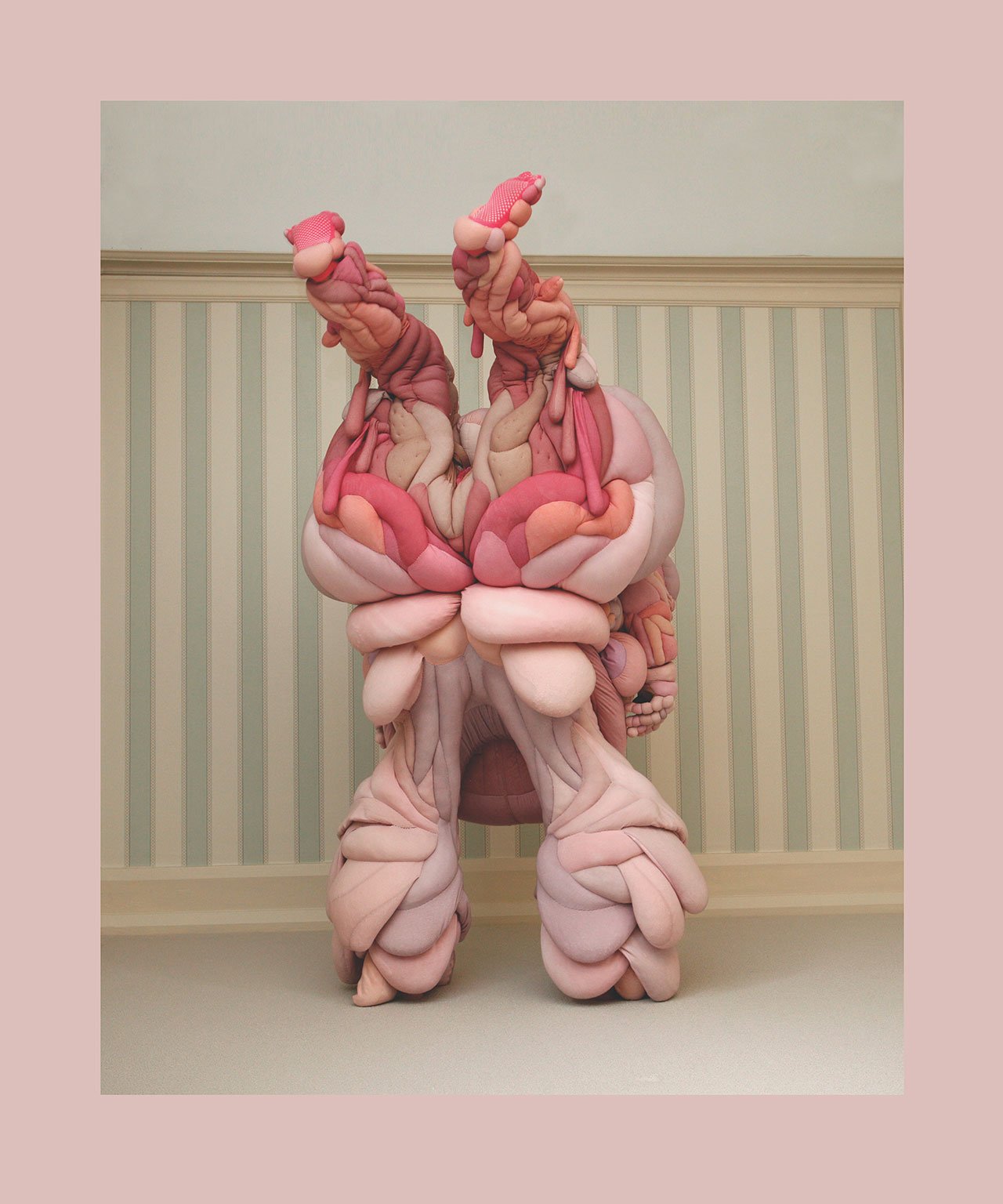
Daisy Collingridge, Butterfly, 2021. Photo by Daisy Collingridge.
Do you participate in the performances? What does it feel like wearing a bodysuit? What feelings do you wish to elicit with each performance?
I have become each character. When I take the photos it is usually me in the suits. I enjoy working like this. It’s very free. Live performance is something I have been exploring more in the past year. It’s a completely different practise and I have been learning a lot. There are practical factors to take into account- like poor periphery vision and overheating. I aim to evoke the same feeling of joy and humanity in the live performances but it is a challenge to control the environment in a live situation.
Each bodysuit represents a different persona, each with their own name. Do you define their character before designing their figure or does the figure give rise to their character?
Their character begins to emerge when I’m making of the head. This is usually when the naming occurs. I like to give them recognisable and familiar names. It wouldn’t be the same if they were called ‘Untitled 1’. Giving them a name signifies that they are an individual and have their own identity. I spend so many days of my life with them as I construct them. They become real to me.
Talk to us about your creative process. Do you design each bodysuit in detail beforehand or do you improvise while you’re putting them together?
It’s a pretty impulsive process. As I mentioned, I make the head first and the body grows from there. There are elements of planning; I decide on a colour palette and dye all the fabric prior to construction but when I begin the sculptural side I work in a spontaneous way. Referencing anatomy books throughout as well as physically wearing elements to study how they respond to movement. Each piece is one of a kind and cannot be re-made in the same way.
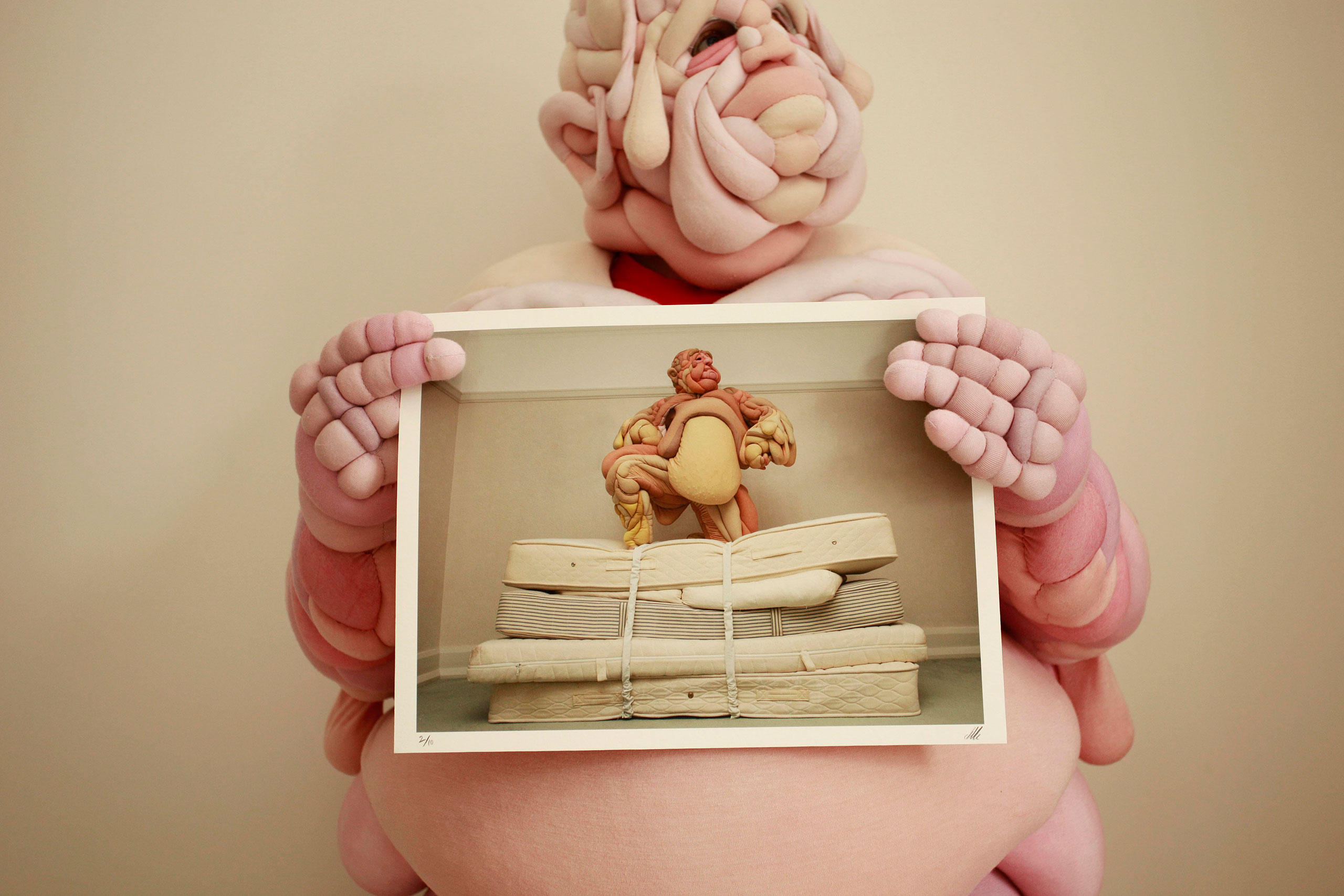
Daisy Collingridge, Burt holds Dave, 2019. Photo by Daisy Collingridge.
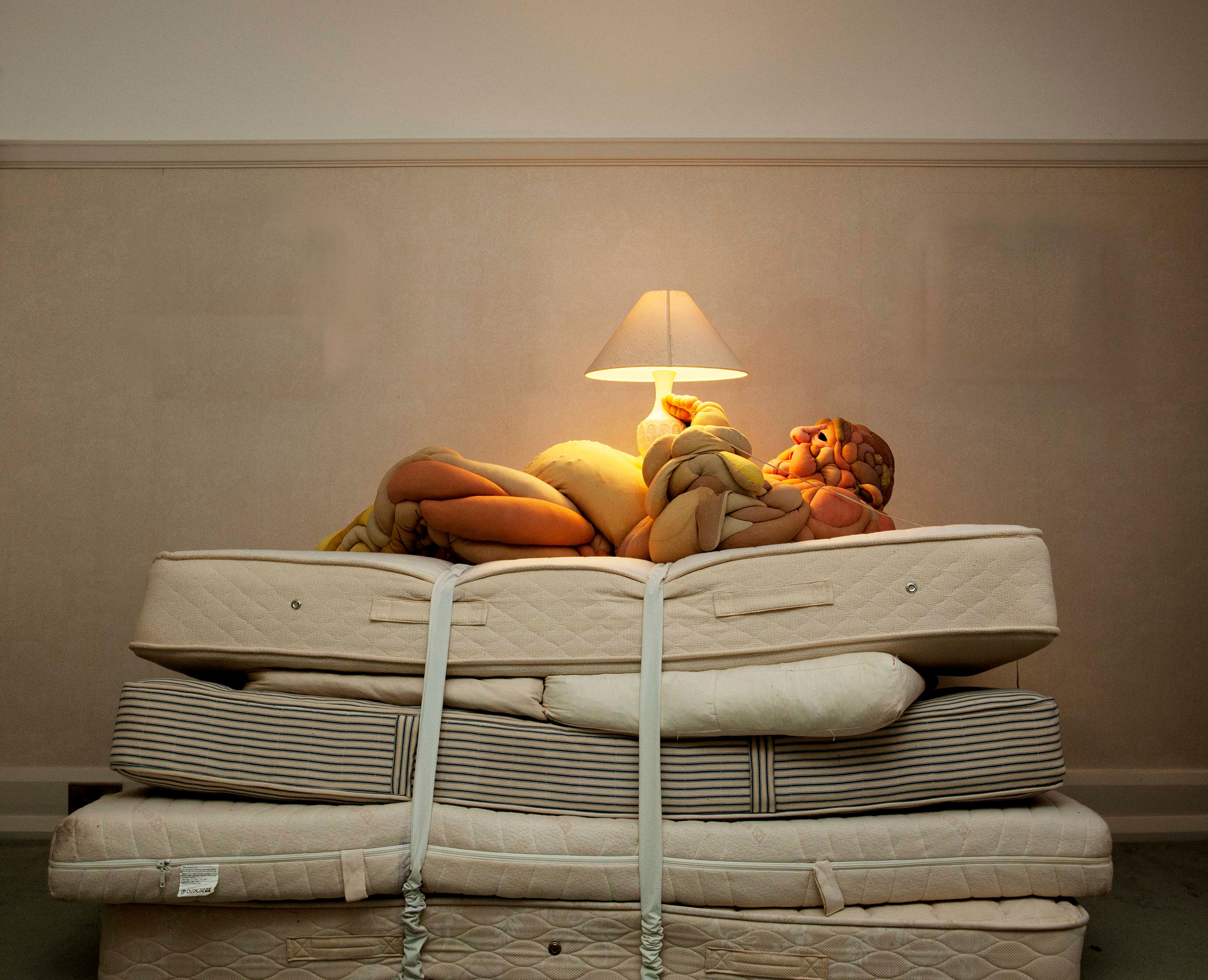
Daisy Collingridge, Dave under the light, 2019. Photo by Daisy Collingridge.
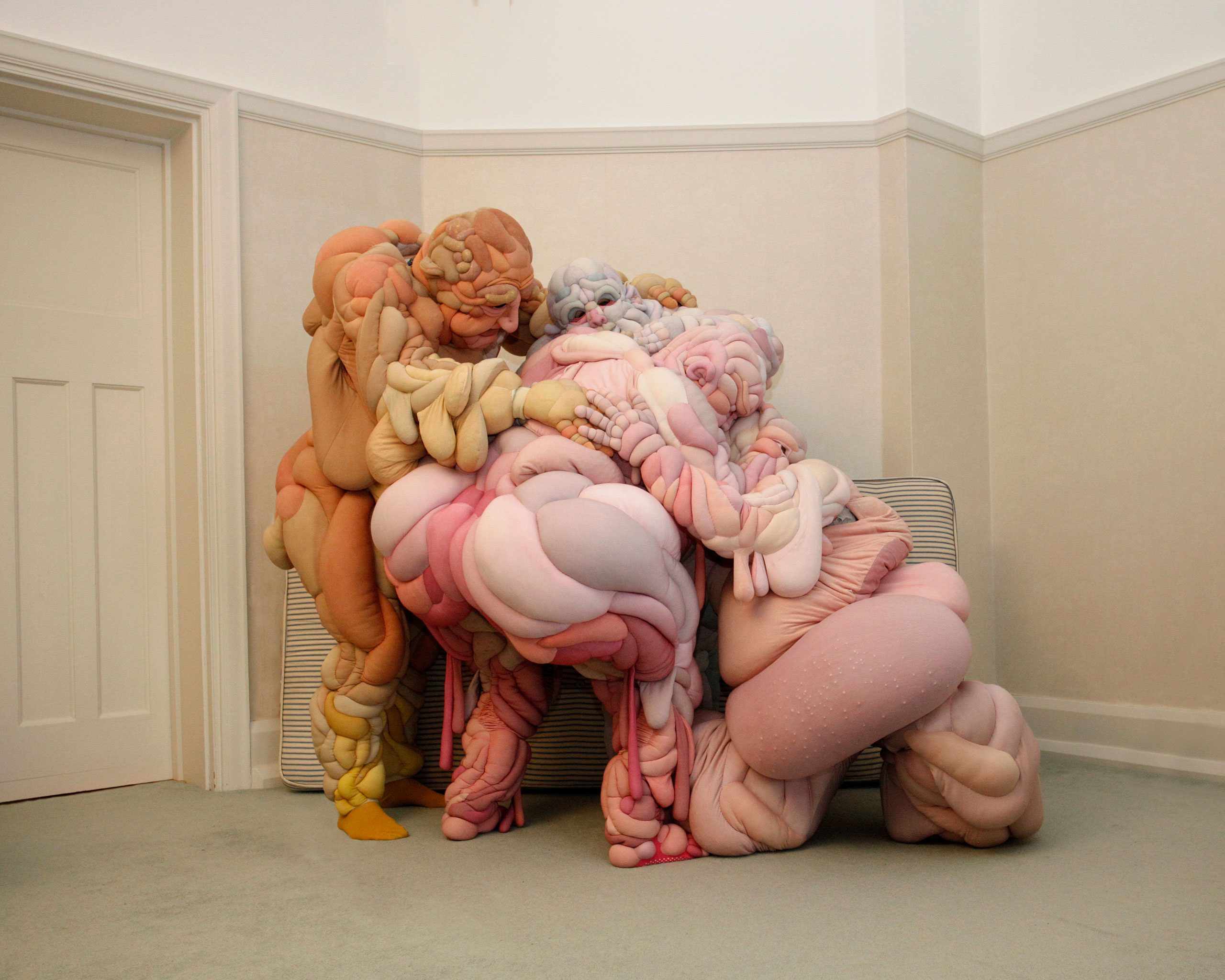
Daisy Collingridge, Cumulonimbus fold, 2021. Photo by Daisy Collingridge.
Your bodysuits are intricately constructed. How laborious and time-consuming is the crafting process? How long does it take you to craft one?
It is a labour-intensive process. They take months to make. Except for the underlying garment structure, the whole piece is hand sewn. They are constructed in sections, head piece, hands, feet, trousers/legs and body sections. The shapes are then built up using layers of wadding and jersey. Each piece is painstakingly hand stitched on. Colour is also a key aspect to the harmony of the final piece. I dye all the fabric myself so I have control over the palette. The soft colours, are reminiscent of my childhood, they are inviting and evoke comfort and familiarity.
How does your background in fashion influence your artistic practice, conceptually, formally and methodologically?
Fashion (at its creative core) is ultimately a study of the body. The body as a form to build upon, the body as a social entity, the body in motion. I’m still looking and responding to these ideas so in that respect I’m very much influenced by my education. I have always had a connection with cloth although this fascination began long before I knew what fashion was. My understanding of the ways of handling cloth, techniques of draping and pattern cutting come into my artistic practise. These are my tools. My understanding of garment construction has enabled me to realise my artistic conceptions.
Were you always interested in fabric manipulation or were you drawn to it as a means to materializing your artistic concept?
Fabric manipulation and artistic concept evolve alongside each other. However, if I am feeling blocked I will return to the fabric and play with ways of manipulating it. Cloth is such a responsive material with endless ways of using it in construction. It is sensitive and familiar. Fabric offers up so many layers of meaning because it is a material that we are so interlinked with, the clothes we wear every day make it our second skin.
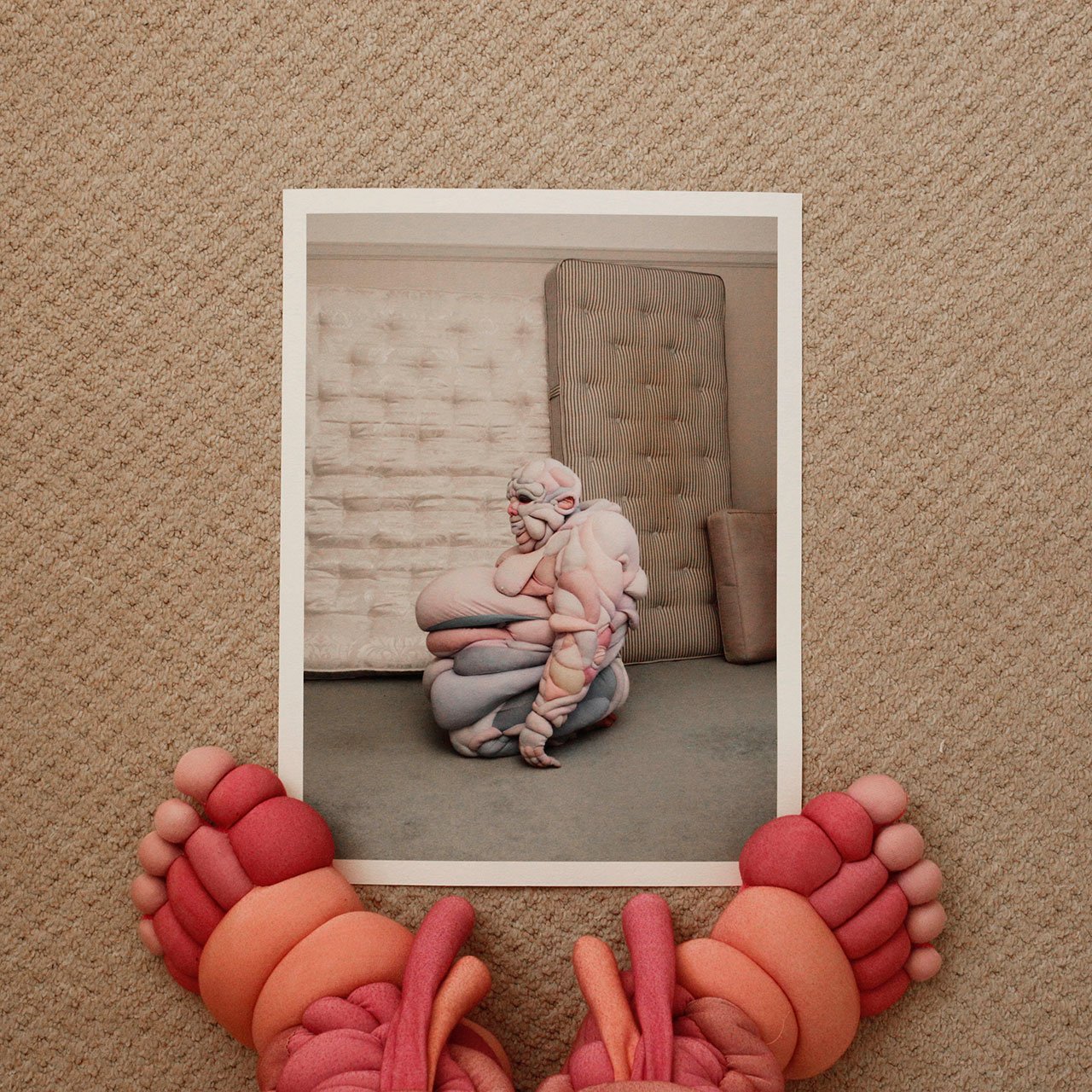
Daisy Collingridge, Hillary's feet on Clive, 2019. Photo by Daisy Collingridge.
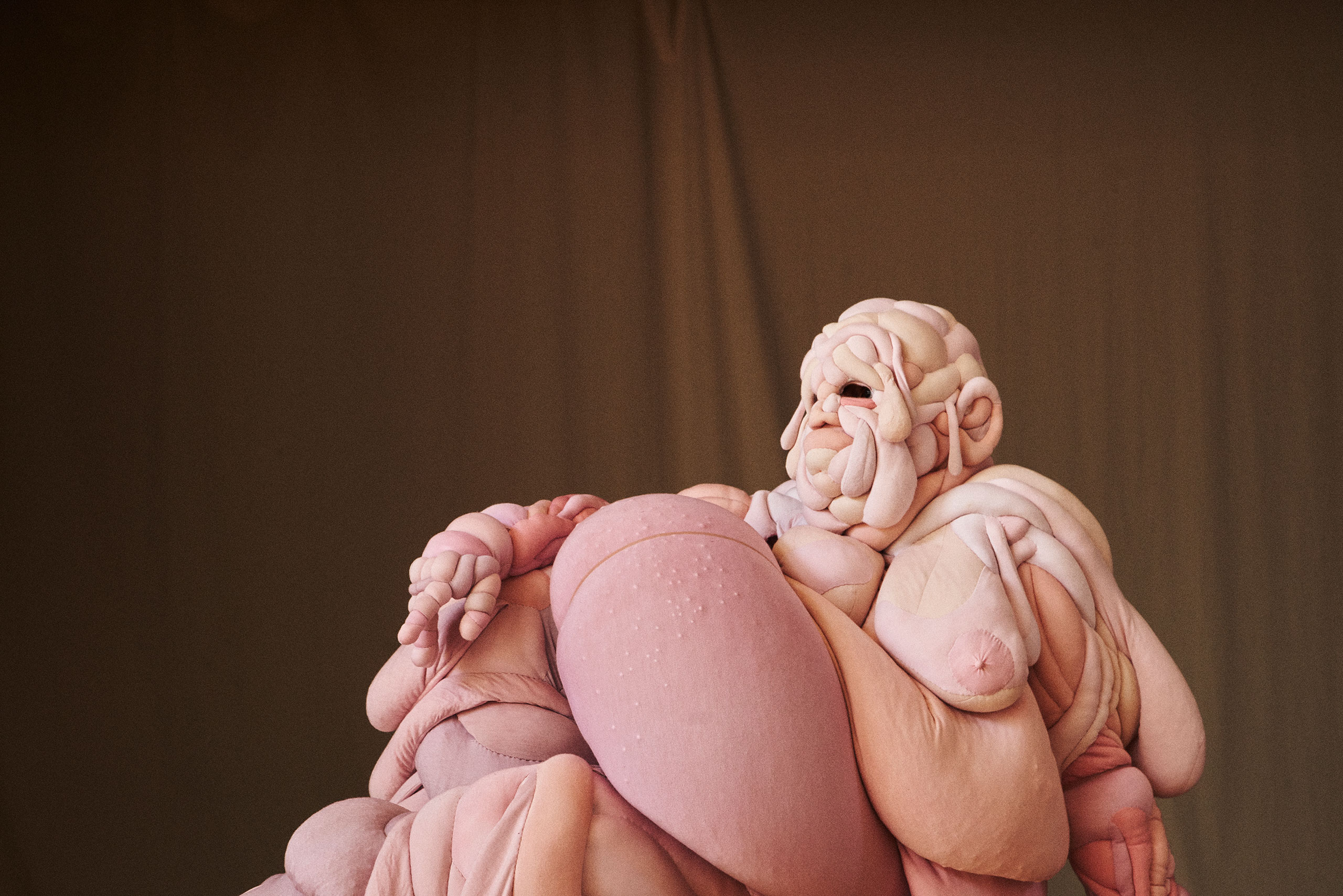
Daisy Collingridge, Burt, 2019. Photo by Mark Sherratt.
The negative effect of social media on users' body image has been widely documented. How does the ever-expanding role of social media influence your artistic practice? Is the unapologetic corporeality of your work a response to the digital world that we mostly now live in?
My work represents the human form. The flesh. The vessel. I am interested in making work that is tactile and tangible which is at odds with social media. It is challenging to depict softness and texture on a small hard square of a phone screen. However, the online world has been pivotal in sharing my work. It opens up new conversations and generates more collaborations. Social media most certainly has its uses for a practising artist, if used carefully as a tool!
Humans have always had a strange fascination with trying to measure and identify what the ‘perfect’ body is. This image of perfection is in constant evolution because perfect doesn’t exist. My work represents a body that is infrequently seen on social media and it is my intention to celebrate the intricate and complex machines that all human bodies are.
What are you working on right now? What are your future plans?
I am currently working on a short film with my talented friend and animator Isabelle Garrett at the Sarabande foundation in London. It is an exciting collaboration where our two universes will collide. I hope to have a solo show in the near future as well.
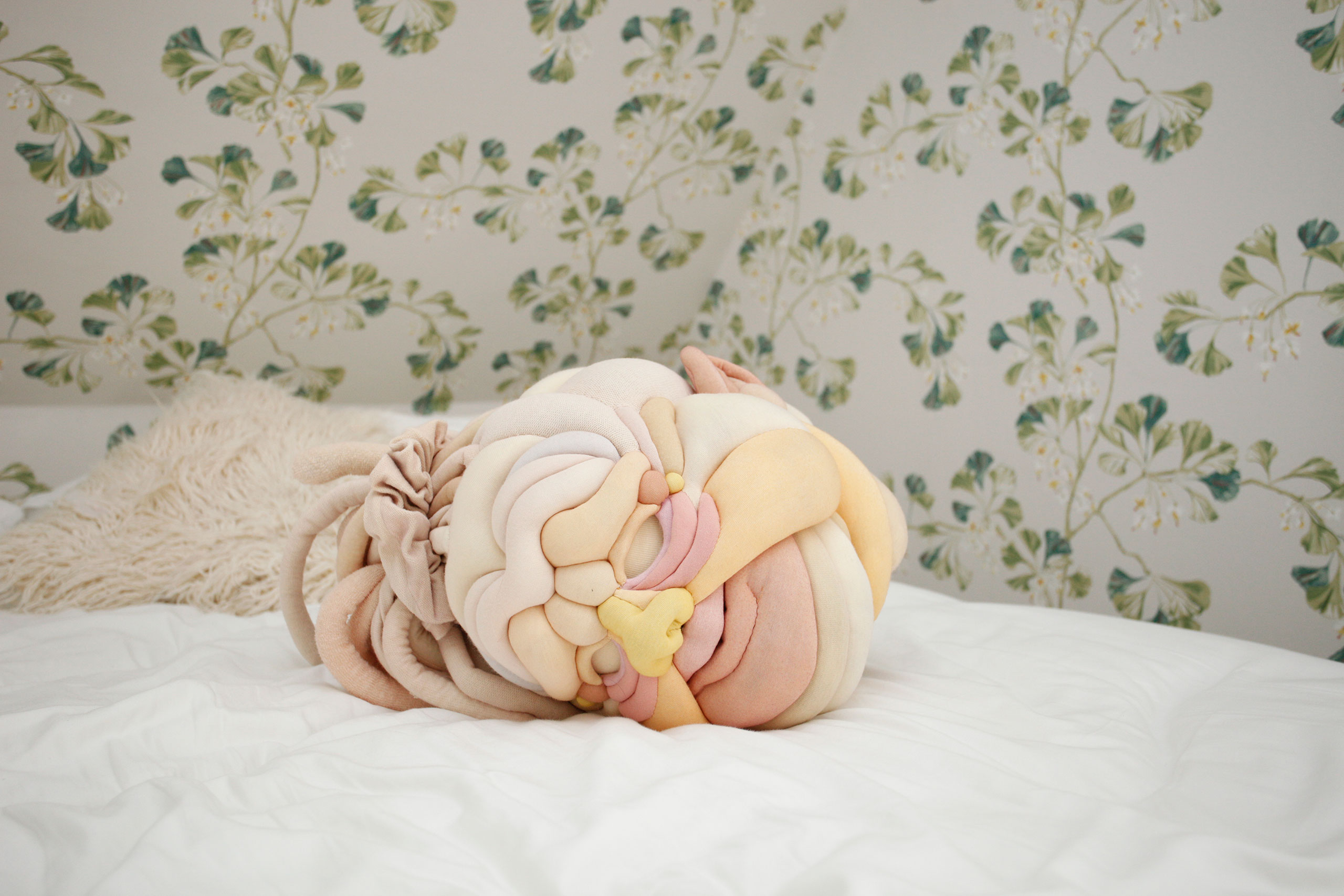
Daisy Collingridge, Head on a be (Suzan), 2021. Photo by Daisy Collingridge.
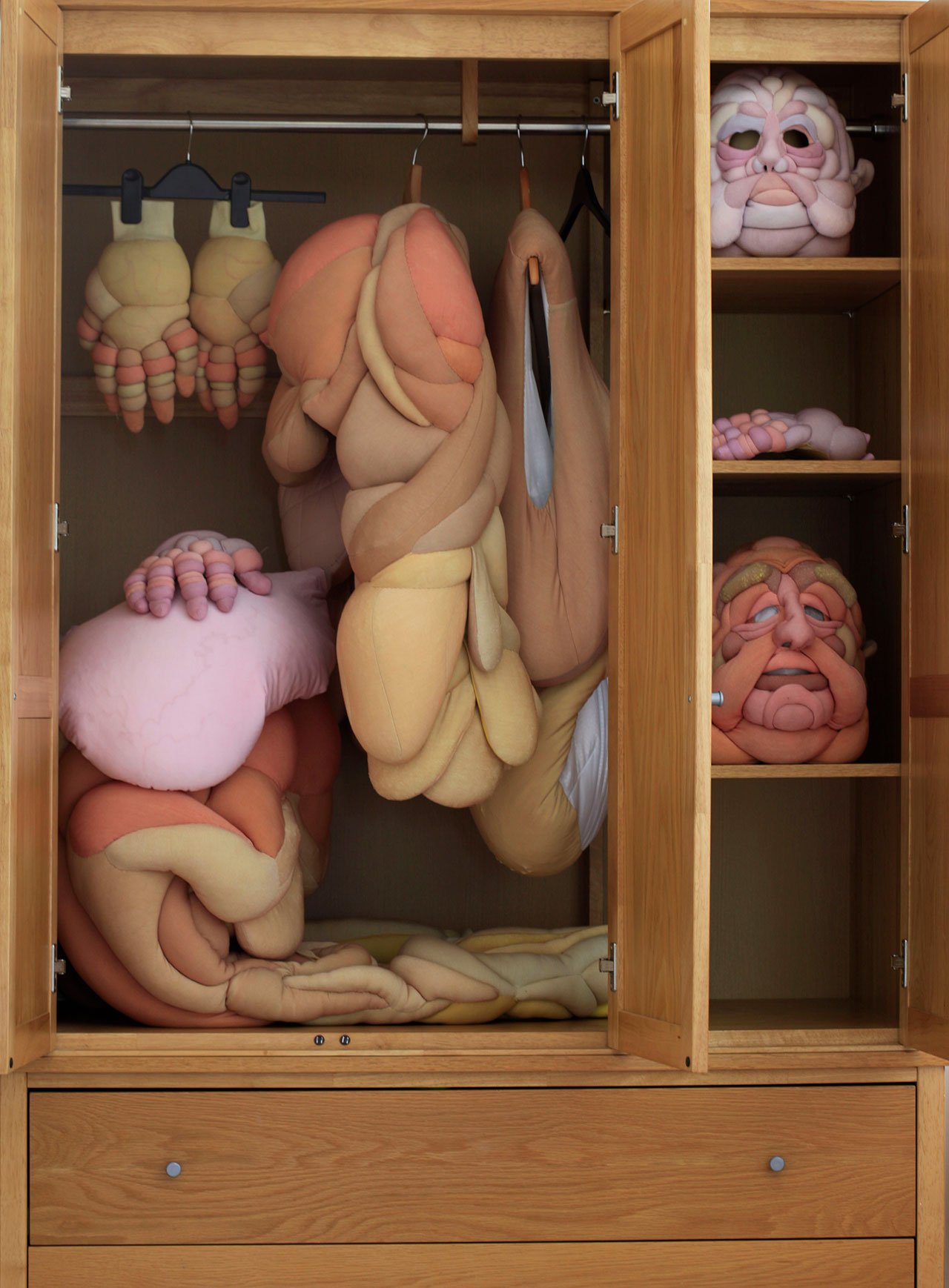
Daisy Collingridge, Who to be today, 2019. Photo by Daisy Collingridge.















